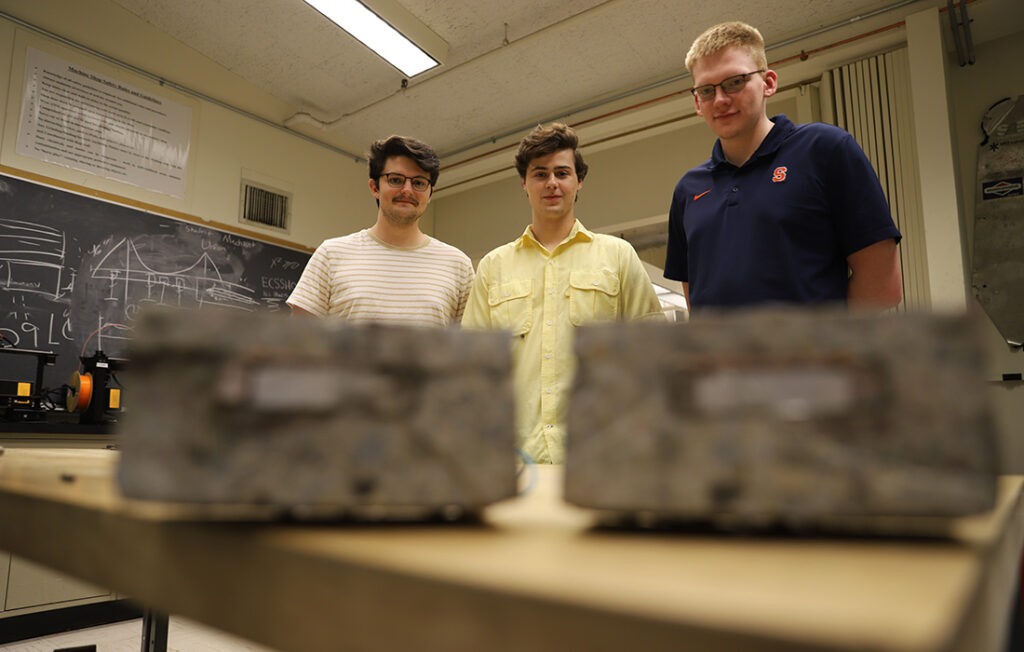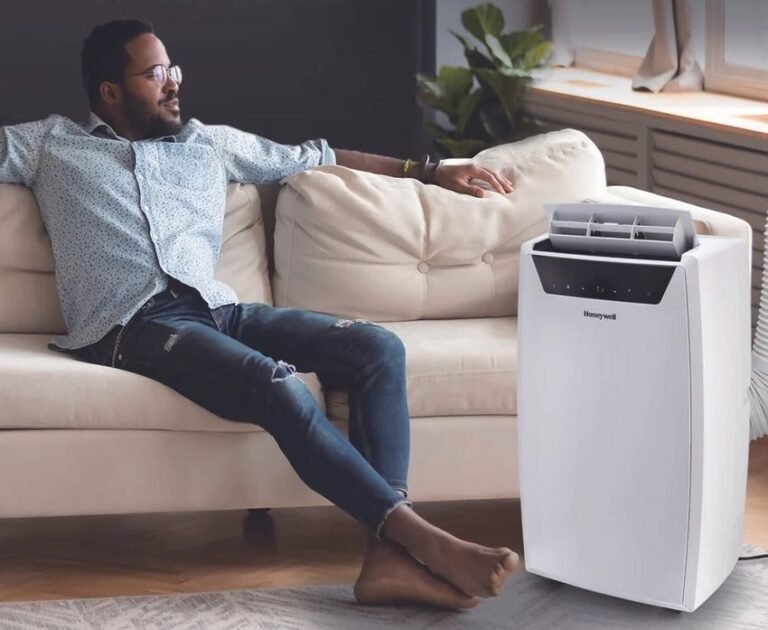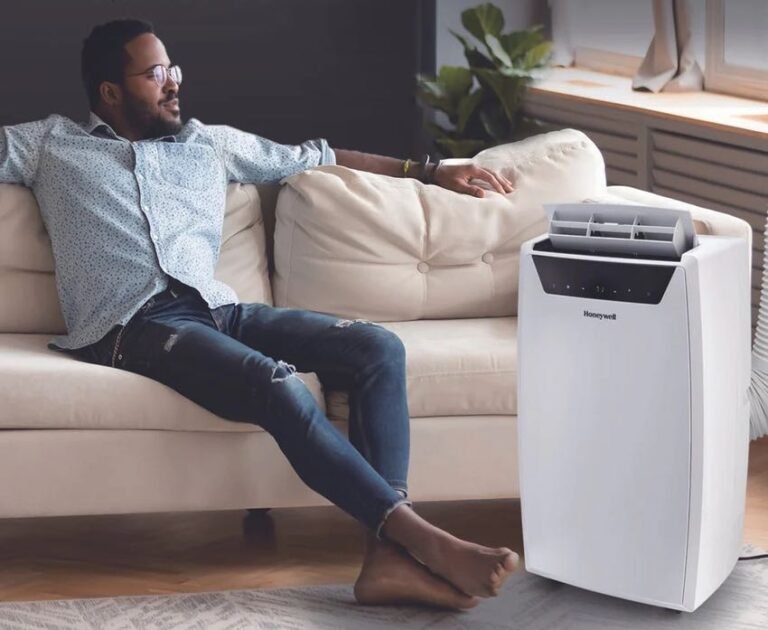Upstairs And Downstairs Thermostat Settings: Mastering Optimal Temperature Control
Upstairs and downstairs thermostat settings can help optimize temperature control in different areas of your home.

Credit: ecs.syracuse.edu
Benefits Of Proper Temperature Control
A properly functioning thermostat is essential for maintaining optimal comfort levels in all areas of your home. With separate upstairs and downstairs thermostats, you can easily control the temperature in each zone, ensuring comfort for everyone in the house.
Benefits of proper temperature control include:
| Optimal comfort levels for all areas of the home: | With separate thermostats, you can set the temperature according to the preferences of each household member, ensuring everyone is comfortable in their respective zones. |
| Energy-efficient HVAC operation: | By setting appropriate temperature levels in different zones, you can prevent overcooling or overheating and reduce energy waste, resulting in more efficient HVAC operation. |
| Cost savings on utility bills: | Properly controlling the temperature in different areas helps prevent unnecessary energy consumption, leading to potential cost savings on your utility bills. |
By considering the benefits of proper temperature control and utilizing separate thermostats for different zones, you can create a more comfortable and energy-efficient environment in your home, while also potentially saving on utility expenses.
Understanding The Difference Between Upstairs And Downstairs
Variations in temperature and airflow within a home are common, especially between the upstairs and downstairs areas. These differences can be influenced by various factors:
- Insulation: The level of insulation in different areas of the house can impact temperature variations. Insufficient insulation in the attic or walls may result in warmer upstairs temperatures.
- Sunlight Exposure: Rooms that receive direct sunlight tend to be warmer, and this can be more prominent on upper floors.
- Ventilation: Airflow between floors can affect temperature differences. Poorly designed or obstructed ventilation systems may hinder proper air circulation, contributing to variations in temperature.
- Heating and Cooling Systems: The type and capacity of heating and cooling systems can play a significant role. Inefficient or inadequate systems may struggle to maintain consistent temperatures throughout the house.
- Thermostat Settings: Incorrect thermostat settings lead to disparities in temperature between the upstair and downstairs areas. Adjusting the temperature settings to optimize comfort on each floor is important.
Understanding these factors is essential to achieving comfortable living conditions within a home. By addressing insulation, optimizing ventilation, and ensuring proper thermostat settings, homeowners can mitigate temperature variations and create a more pleasant environment throughout their living spaces.
Factors Affecting Temperature Control
Insulation and air leakage play a crucial role in controlling the temperature in your home. Proper insulation helps in maintaining a consistent temperature by preventing heat transfer. Insufficient insulation can lead to significant energy loss and make it difficult to regulate the temperature. Similarly, air leakage can allow hot or cold air to enter or escape the house, affecting the overall temperature control.
Sun exposure and shading are other factors that can impact the temperature in your home. Direct sunlight can heat up a room, making it uncomfortable. Proper shading techniques such as using curtains, blinds, or shades can help in blocking the sunlight and maintaining a cooler temperature.
The capacity and efficiency of your HVAC system also affect temperature control. An appropriately sized system ensures proper cooling or heating without overworking. An efficient system utilizes energy more effectively, resulting in better temperature control and lower energy bills. Regular maintenance and proper airflow are essential for optimal HVAC performance.
Setting The Right Temperature For Upstairs Areas
Setting the Right Temperature for Upstairs Areas
When adjusting the thermostat settings for upstairs areas, there are several considerations to keep in mind, particularly during summer and winter months. Balancing comfort and energy efficiency is essential to create a comfortable living environment while keeping energy costs under control.
Summer:
- Optimal Temperature: Set the temperature a few degrees higher than the downstairs to achieve a comfortable atmosphere. Aim for a balance between coolness and energy conservation.
- Consider Activity Levels: If the upstairs area is primarily used during certain times of the day, adjust the temperature accordingly. Raise it when the space is occupied and lower it when it’s not in use.
Winter:
- Optimal Temperature: Set the temperature a few degrees lower than the downstairs to avoid overheating and excessive energy consumption.
- Occupancy: Adjust the temperature based on occupancy. Lower it when the upstairs area is unoccupied to save on heating costs.
By taking these simple steps, you can create a comfortable and energy-efficient environment in upstairs areas throughout the year.
Setting The Right Temperature For Downstairs Areas
The optimal temperature for downstairs areas is crucial for maintaining a comfortable and consistent environment. To determine the right temperature, several factors need to be considered. First, take into account the activities that take place downstairs. For example, if it’s used as a living or working space, a slightly cooler temperature may be appropriate compared to a bedroom. Additionally, the number of people in the area should be taken into consideration, as more bodies generate heat. Strive for a balance between comfort and energy efficiency.
Strategies for maintaining consistent temperatures can help alleviate temperature fluctuations. Adequate insulation, proper air circulation, and the use of blinds or curtains to control sunlight can all contribute to a more stable indoor climate. Moreover, adjusting the thermostat settings to reflect the time of day is essential. Lower temperatures during the night can promote better sleep, while slightly higher temperatures during the day can support productivity. By making small adjustments, you can create a comfortable environment and manage energy consumption.
Zoning And Smart Thermostat Options
When it comes to achieving optimal comfort and energy efficiency in your home, zoning and smart thermostat options are worth considering. Zoning systems allow you to divide your home into separate areas, each with its own thermostat to individually control the temperature. This ensures that each room or zone can be set to the desired temperature, saving energy by not overheating or overcooling unused spaces.
In addition to zoning systems, smart thermostats offer advanced features to enhance temperature control. With customizable settings and scheduling options, you have the flexibility to set different temperatures for various times of the day or specific days of the week. This allows you to automatically adjust the temperature based on your lifestyle and preferences, saving energy when you’re away and providing comfort when you’re home.
Overall, both zoning systems and smart thermostats offer benefits such as increased energy efficiency, improved comfort, and reduced energy costs. By installing and using these technologies, you can have better control over your home’s temperature and create a more comfortable living environment.
Additional Tips For Fine-tuning Temperature Control
When fine-tuning temperature control in your home, there are additional tips that can help you optimize your thermostat settings. Utilizing ceiling fans is one such method. By running them in the correct direction, you can improve air circulation, aiding in more efficient heating and cooling. Another essential aspect is properly maintaining and servicing your HVAC system. Regularly cleaning or replacing air filters and scheduling professional maintenance can ensure that your system operates at its best. Additionally, you may want to consider supplemental heating and cooling methods to further enhance comfort in specific areas of your home. Space heaters, portable AC units, or even zone control systems can help you achieve personalized temperatures while reducing energy consumption. By implementing these tips, you can optimize your thermostat settings and create a comfortable living environment.
Maximizing Energy Efficiency With Temperature Control
In order to maximize energy efficiency and save on utility costs, it is important to effectively control the temperature in both the upstairs and downstairs areas of your home. One way to achieve this is by utilizing the programming and scheduling features of your thermostats. This allows you to automatically adjust the temperature based on your daily routine, ensuring that energy is not wasted when no one is home.
Another effective tip is to monitor and optimize your energy usage. This can be done by regularly checking the energy consumption of your thermostat and making necessary adjustments. For instance, if you notice that your thermostat is set too high or low, you can adjust it to a more energy-efficient setting.
| Energy-saving Tips |
|---|
| 1. Use a programmable thermostat to set temperature schedules based on your daily routine. |
| 2. Adjust the temperature when no one is home to conserve energy. |
| 3. Regularly monitor and optimize your energy usage by checking thermostat settings. |
| 4. Consider using supplementary insulation or weatherstripping to keep the temperature consistent in different areas of your home. |
Troubleshooting Temperature Control Issues
Temperature control issues can be frustrating, but there are common problems and solutions that you can try before seeking professional help.
| Problem | Solution |
|---|---|
| The temperature is too hot or too cold | Try adjusting the thermostat settings by a few degrees to see if that resolves the issue. If not, check if the thermostat is clean and free from debris. Also, make sure that there are no obstructions blocking the airflow. |
| The thermostat is not responding | Check if the thermostat is receiving power. Replace the batteries if necessary. If the issue persists, reset the thermostat to its factory settings and reprogram it. |
| The temperature fluctuates | Check if the thermostat is properly calibrated. If not, recalibrate it according to the manufacturer’s instructions. Additionally, ensure that there are no drafts or leaks in the area around the thermostat. |
If your troubleshooting efforts do not resolve the temperature control issues, it may be time to seek professional help. HVAC technicians have the expertise to diagnose and fix complex problems.
Preventing temperature-related complications is essential. Regularly clean and maintain the thermostat to ensure it works efficiently. Also, schedule routine HVAC maintenance to identify and address any potential issues before they become major problems.
Frequently Asked Questions On Upstairs And Downstairs Thermostat Settings
Can I Have Different Thermostat Settings For Different Floors?
Yes, you can have different thermostat settings for different floors. Consider getting a zoning system installed that allows you to control the temperature independently on each floor. This ensures optimal comfort and energy efficiency throughout your home.
How Do I Set The Upstairs And Downstairs Thermostat Temperatures?
To set the thermostat temperatures properly, consider the desired comfort level, energy efficiency, and the difference in natural temperature between the floors. Generally, the upstairs temperature should be set a few degrees higher in the summer and a few degrees lower in the winter compared to the downstairs.
Should I Use The Same Thermostat Settings For Both Floors?
Using the same thermostat settings for both floors may lead to discomfort and energy waste. Since hot air rises, the upstairs tends to be warmer, and adjusting the thermostat for the downstairs may make the upstairs cooler than desired. Different settings for each floor allow for better control and comfort.
Are There Any Benefits To Having Separate Thermostat Settings For Upstairs And Downstairs?
Having separate thermostat settings for different floors has numerous benefits. It allows you to customize the temperature for each floor based on occupancy and personal preferences. This ensures optimal comfort, energy efficiency, and peace of mind for everyone in your home.
Conclusion
To sum up, setting different thermostat temperatures for the upstairs and downstairs areas can optimize comfort and energy efficiency in your home. By understanding the temperature differences between these areas and using smart thermostat features, you can achieve better control over your indoor climate.
Remember to consider the needs of each zone, monitor energy usage, and adjust settings as needed. With this approach, you can create a more comfortable and cost-effective living environment.






